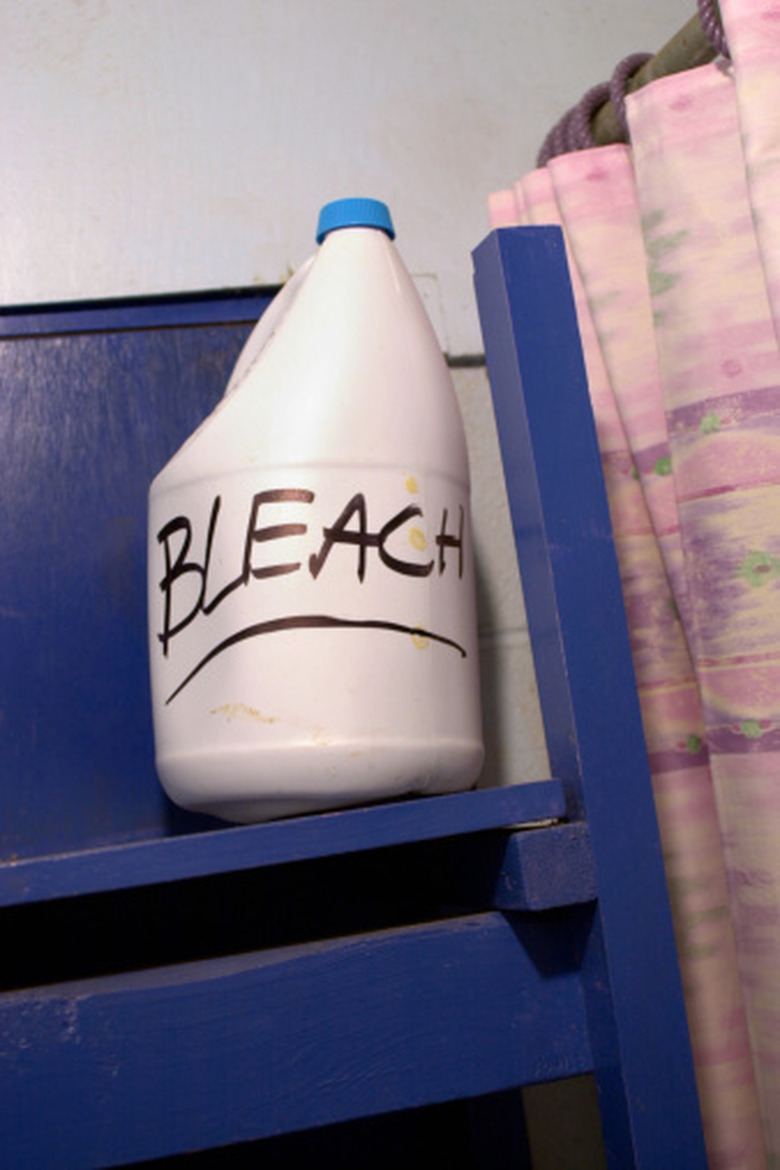Chemicals In Clorox Bleach
Clorox-brand household bleach is a solution of five chemicals dissolved in water that perform bleaching, cleaning and disinfecting functions. Clorox liquid bleach was introduced to commercial customers in 1913 in Oakland, California. The Clorox Company's first customers were laundries, breweries, food processors and municipal water systems looking for a cheap, safe and effective bleach and disinfectant. A household strength version of Clorox was introduced in 1916 in a 15-oz. amber glass bottle.
Clorox Ingredients
Clorox Ingredients
The active ingredient in Clorox household bleach is sodium hypochlorite, which performs the bleaching, stain removal and disinfecting functions. Other chemical ingredients in Clorox include sodium chloride (salt), which thickens and stabilizes the solution. Sodium carbonate (washing soda) is an alkaline cleaning agent that breaks down alcohol and grease stains. Sodium hydroxide (lye) is another alkaline cleaning agent that breaks down fatty, oily or acidic stains. Sodium polyacrylate is a dispersant that prevents loosened soils from depositing back on fabrics during the laundry cycle.
Making Bleach
Making Bleach
The Clorox Company makes its own sodium hypochlorite. It starts by buying commercial chlorine, which is prepared by passing an electric current through seawater to produce pure chlorine and sodium hydroxide. Clorox takes the chlorine it bought and bubbles the gas through a solution of water and sodium hydroxide. All the chlorine is converted to sodium hypochlorite. Clorox-brand household bleach is a 6 percent solution of sodium hypochlorite in water plus the other added cleaning agents, stabilizer and dispersant.
Clorox Breaks Down
Clorox Breaks Down
The active ingredient in Clorox comes from seawater and breaks down into salt and water. Sodium hypochlorite is a reactive chemical oxidizer that degrades rapidly and completely. There's no free chlorine released by the breakdown of Clorox if the product is used as directed. The Clorox Company says 95 to 98 percent of the sodium hypochlorite breaks down to salt and water. The remaining traces of sodium hypochlorite and the other ingredients break down into compounds that are safe for septic tanks and sewage treatment plants, according to the Clorox Company.
Clorox Safety
Clorox Safety
Clorox household bleach is such a familiar product that it's easy to forget it contains powerful chemicals and that certain mistakes can turn this commonplace product into a menace. For instance, the label warns you never to mix Clorox with toilet bowl cleaners, rust removers, household ammonia, vinegar or other strong acids. These products will react chemically with sodium hypochlorite to release poisonous chlorine gas. Clorox should always be kept tightly capped and stored out of reach of children. It should always be under control of an adult while it's being used. Don't use full strength for cleaning; always dilute according to label directions. When doing major cleaning or disinfecting, ventilate the work area.
